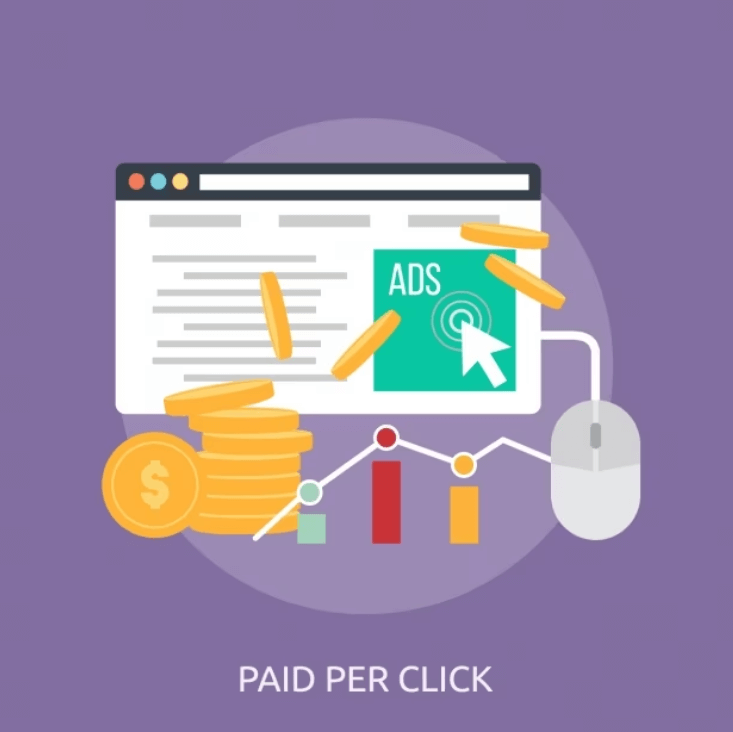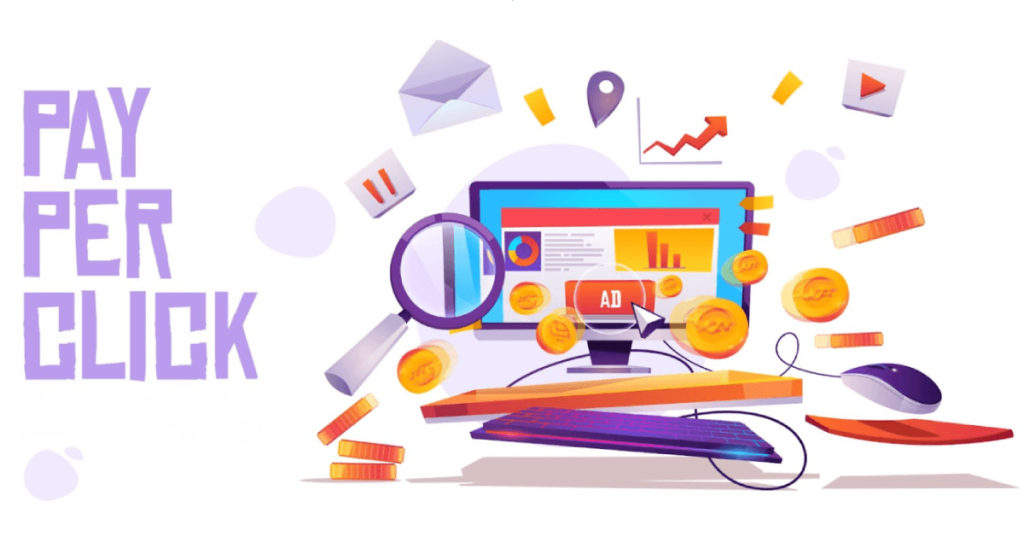What is Amazon PPC and How Does It Work?
The Amazon PPC advertising program used by Amazon, known as Amazon PPC adverts, places ads on product pages and search engine results pages. These sponsored advertisements are purchased by manufacturers, brands, and third-party merchants in order to advertise their goods.
A PPC campaign can be put up in two different ways. The initial step is choosing manually the keywords, Amazon advertising, and budget for your Amazon PPC campaign. It is the strategy used the most frequently to set up an Amazon PPC campaign.
Benefits of Amazon PPC
You can direct Amazon customers to your products. instead of using other platforms, it enables you to compete with other retailers who use the same keywords in their advertisements.
And based on their accessibility and interest in your goods, you can target particular geographic locations. For instance, you might only want to promote in Pakistan if you offer cricket balls for young children. The reason for this is that cricket ball sales are in high demand in many areas of Pakistan. Users interested in particular sports, like football or weightlifting, can also be your target audience.
What are Sponsored Ads and their types?

Sponsored ads are paid advertisements that help sellers to promote their products. They are displayed in search results and on product pages, increasing visibility and bringing in more relevant traffic. Because advertisers only get paid when people click on their ads, this is a profitable marketing tactic. There are three types of sponsored ads.
- Sponsored Products
- Sponsored Brands
- Sponsored Display
Sponsored Product Ads Strategies
Sellers use sponsored product ad methods to promote their products on Amazon successfully. These strategies help in increasing sales, visibility, and exposure. Here are a few sponsored product ad strategies:
Auto Catch-all Campaigns
It allows sellers to maximize their ad reach in order to attract potential buyers who are looking for products. In Auto CAC (catch-all campaigns) we target all auto targetings(Loose, Close, Substitutes, complements) on our advertised products. In bid strategy, we use Up and Down only or fixed bid strategy. For up and down only placement for Top of Search would be 100% and for fixed strategy placement would be 200%.
Manual Catch-all Campaigns
It allows sellers to maximize their ad reach in order to attract potential buyers who are looking for products. In Manual CAC (catch-all campaigns) we target relevant keywords and products. In keyword targeting, we target relevant keywords in broad match type and we add relevant products in our catch-all campaigns, in one campaign we add 2 ad groups, one for product targeting and the other for keywords.
In bid strategy, we use Up and Down only or fixed bid strategy. For up and down only placement for Top of Search would be 100% and for fixed strategy placement would be 200%.
Offensive ASIN Targeting
In order to divert potential buyers and gain a competitive edge, sellers intentionally choose the ASINs of the products offered by competitors in order to display their own ads.
ASIN Targeting
Advertisers target certain ASINs (Amazon Standard Identification Numbers) to have their ads displayed on the product detail pages of those ASINs.
Cross-selling Targeting
It promotes related products to customers who are exploring or purchasing specific items in order to boost sales.
Up-selling Targeting
Upselling involves recommending more expensive or updated versions of a product to clients who are considering a less expensive option.
Harvesting CST targeting
Targeting clients who have already made purchases requires taking note of their search phrases in order to develop fresh PPC campaigns and find customers who are similar to them.
Exact-match Type Targeting
This targeting option gives you great control over ad visibility by ensuring that your advertisements are only displayed when the search query precisely matches the search terms you chose.
Phrase-match Type Targeting
This method lets you achieve a wider reach while maintaining some level of keyword precision by displaying your Amazon ads when the search query contains your defined keyword phrase in the exact order.
Broad-match Modifiers Type Targeting
By implementing this technique, you may increase your audience while controlling the ads’ relevancy by specifying certain terms that must appear in the search query.
Sponsored Brand Ads Strategies
Amazon sellers may display their brand logo, a unique headline, and a selection of their items in Sponsored Brand ads, a sort of advertising format. These ads, which are prominently shown in search results, help in raising brand familiarity and awareness among customers. The sponsored brand ad strategies include various targeting options and creative formats to engage the audience effectively. Some common strategies within sponsored brand ads are:
Video Ads Targeting
In order to implement this strategy, Amazon will host sponsored videos. Through video content, it enables advertisers to engage and seize the attention of consumers.
Learn more about Amazon Product Videos.
Store Spotlight Targeting
Advertisers can showcase their entire brand or particular products within their Amazon store using store spotlight targeting, which will increase visibility and increase traffic to their store page.
Learn more about Amazon Sponsored Brand Ads.
Sponsored Display Ads Strategies
Sponsored Display Ads are a type of advertising technique that gives sellers an opportunity to highlight their products and reach the right audiences. Through Amazon’s advertising network, these ads can appear on product detail pages, customer review pages, and even on non-Amazon websites and applications. Sponsored display ads intend to raise brand recognition, promote product exposure, and boost sales.
Audience Targeting
It targets particular audiences based on their demographics, interests, and behaviors, advertisers can better target the correct consumers with their ads.
Views Remarketing Targeting
This strategy focuses on consumers who have already seen a product, reminding them of it and encouraging them to buy.
Purchase Remarketing Targeting
To improve client lifetime value, advertisers target customers who have already made a purchase and offer them complementary items or upselling possibilities.
Product Targeting
On Amazon, advertisers may choose specific products to target their adverts towards, guaranteeing that their ads are displayed to interested customers who are looking at comparable products.
Category Targeting
With the use of this tactic, advertisers can display their ads to customers who are most likely to be interested in a given category of products.
Portfolio Structure
Amazon PPC Advertising campaigns are arranged and organized according to a portfolio structure. It involves grouping PPC campaigns according to particular factors like the product category, amazon PPC campaign objective, target audience, or performance objectives. Advertisers can manage and optimize Amazon PPC campaigns more effectively with the aid of a well-structured portfolio, which also makes it simpler to assign funds, track performance, and make tactical adjustments. It offers a structure for planning and expanding advertising initiatives on the Amazon platform.
Campaign Naming Structure
Your advertising campaigns can be arranged and labeled using a campaign naming system. It enables you to monitor various campaigns and understand their objectives. A good naming structure includes information about the campaign’s objectives, product, ad type, match type, strategy, keyword set, bidding Strategy and who launched it. Consider creating a campaign with the title:
Product Name – Ads Type – Match Type – Purpose – Bidding Strategy – Placement – Name
Example: Garlic Press – SP – E – Ranking – FB – TOS – HMZ
This makes it simple to recognize and efficiently manage your campaigns.
Bidding Strategy Types

This strategy is used in digital advertising to determine how much an advertiser is willing to pay for each click or impression on their ads. Here are three common types of bidding strategies:
Up and Down Only
With this bidding method, bids can be raised or lowered according to certain outcomes. For example, the bid may be raised if an advertisement is doing well and resulting in a high volume of conversions in order to maximize its visibility. On the other hand, if the advertisement is underperforming, the offer may be lowered to cut costs.
Down Only
In this method of bidding, offers are simply dropped, not raised. When keeping costs to a minimum and sticking to a set budget is the main objective, this strategy might be helpful. Based on performance information, the bids are reduced, making sure that the advertiser never spends more than their maximum price.
Fixed
A fixed bidding strategy keeps the bid consistent during the duration of the campaign. This strategy is appropriate when an advertiser wants to keep their bid constant regardless of performance or competition. A fixed bidding method has the benefit of bringing stability and certainty to ad expenses.
PPC Bidding strategy
If the ACoS < 1/2 of target ACoS then I would like to use up and down only and if the ACOS > 1/2 of target ACOS then Down only and if it’s the new launch I would like to use fixed bids.
PPC Bids Placement
It allows you to add different bids by placement by defining a percentage increase for your base bid. We can increase the base bid to a maximum of 900%. There are 2 types of bid placement:
- Top of Search (First Page)
- Product Pages
For instance, Your bid for a keyword is $1 and you increase your placement by 100%. It’ll increase your bid to 100% of your base bid by making $2. This increases the chances to show your product at the top of the first page or product detail page.
Campaign Structure

Campaign structure often involves dividing advertising efforts into clear, achievable chunks. In the campaign structure, we involve organizing sponsored ad types and match types accordingly.
We differentiate it in manual and auto campaigns.
In manual campaigns there are 5 types:
- Exact
- Phrase
- Broad
- Product Targeting
- Category Targeting
And in the Auto campaign, there are 4 types:
- Close-match
- Loose-match
- Complements
- Substitute
Search Query Performance Dashboard
The SQPD provides you with detailed information about how your ads are performing based on the search terms used by customers. It helps you understand which search queries are getting impressions, clicks, and sales for your brand.
In SQPD the dashboard shows you:
- Search Query
- Impressions
- Clicks
- Cart Adds
- Purchases
By going through SQPD, you can identify the most relevant and profitable search terms that are driving sales for your brand products.
For retailers on the biggest online marketplace in the world, Amazon PPC is a game-changer. Sellers may raise conversion rates, attract the proper consumers, and increase product awareness by using efficient advertising strategies. Sellers may increase their return on investment by using a variety of sponsored ad kinds and clever targeting techniques. Sellers may organize campaigns, pick suitable bidding tactics, and make use of tools like the Search Query Performance Dashboard to optimize their Amazon PPC efforts and get outstanding results. So, whether you’re an established seller or just getting started, tap into Amazon PPC’s enormous potential to grow your company to new heights. Start putting these techniques into practice right away or get in touch with us to help you see the amazing effects on your Amazon success story!

